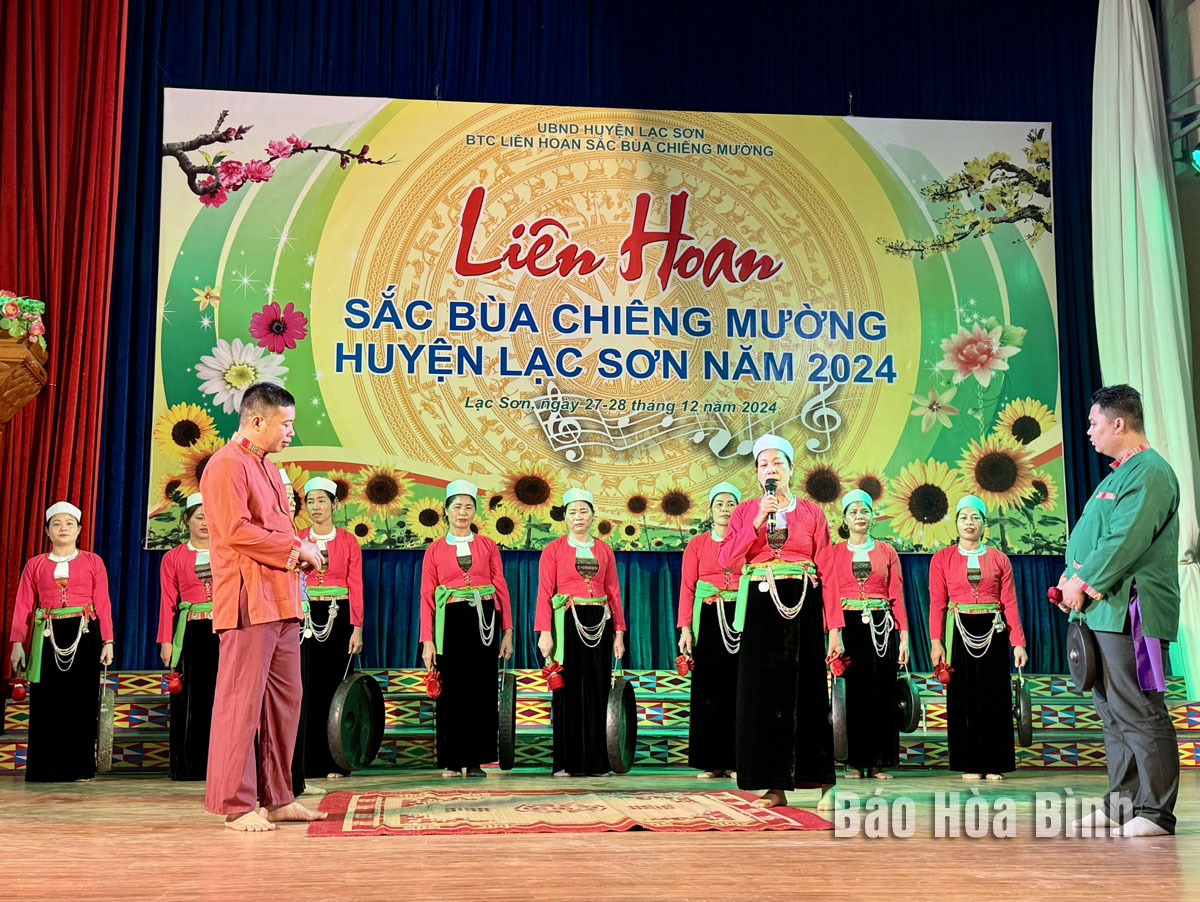


 A Sac Bua troupe from Thuong Coc ward performs at the 2024 festival of Sac Bua singing and Muong gongs. In Thao Ca village of Vinh Tien commune (Kim Boi district), Sac Bua singing is frequently performed around the Lunar New Year (Tet) holiday. During Tet, members of the local singing troupe wear traditional costumes and bring gongs to visit families, wishing them prosperity. The Thao Ca troupe currently consists of dozens of people from various age groups.
Meritorious Artisan Bui Tien Xo from Vinh Tien said Sac Bua singing is a long-standing cultural tradition, often performed at significant events such as longevity celebrations, weddings, and most importantly, Tet. The lyrics convey blessings for health, good fortune, and prosperity in the new year.
This custom is actively preserved by the Muong people in several communes of Quyet Thang and Cong Hoa in Lac Son district.
According to Chairman of the Four Muong Club in Thuong Coc commune Bui Bao Du, Sac Bua singing is a unique form of Tet blessing. Each verse, along with the sound of the gongs, expresses the collective hopes and desires of the community while connecting people to one another and to nature. Du said he hopes to continue contributing to preserving this heritage.
Bui Thi Tham, Director of the Culture, Sports, and Communication Centre of Lac Son district, said with 92% of the population being Muong people, the district is actively preserving unique Muong cultural values such as mo (shamanic rites), gongs, and Sac Bua singing.
In December 2024, the district People's Committee organised the festival of Sac Bua singing and Muong gongs as part of the national target programme for socio-economic development in ethnic minority and mountainous areas. The singing not only brings joy to people during the Lunar New Year but also extends good wishes to families.
Meritorious Artisan Bui Huy Vong, a researcher of folk culture in Huong Nhuong commune (Lac Son district), Sac Bua singing is an essential part of the traditional Tet celebration of the Muong people. What makes it unique is the combination of singing and gongs' sound. However, this practice is now at risk of fading away. Several local governments have encouraged its practice and provided environments for it to flourish, while artisans and cultural researchers are working to preserve, collect, and study the tradition to ensure the singing maintains its role in the culture and daily life of the Muong people in Hoa Binh.
|